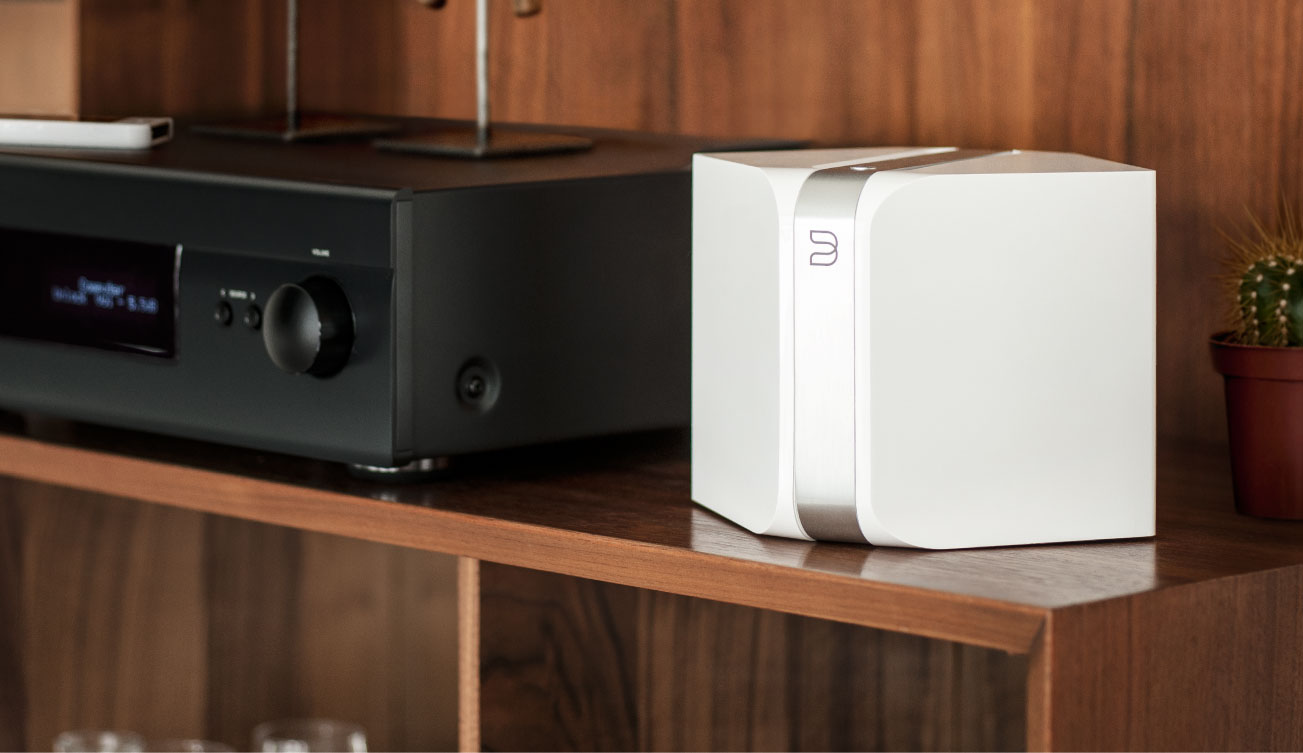My wife and I have for years listened to music from CDs on our DALI 400 loudspeakers through an NAD 3020i amplifier and our NAD T514 DVD player.
This setup has served us well. CD’s are however an outdated technology and we found
- that we stashed most of our CDs away. They might have looked cool on the wall in the 90′, but in 2013, in Denmark, they should be out of sight
- that due to the point above, we only listened to a selected few
- that many of our CDs was started to wear out
- that our T514, which have served us well, was started to show the first sign of old age
So what to do? We looked for a way to be able to enjoy CD quality without hazzle, while taking the leap into streaming music.
We took a look at Sonos, but rejected it due to their sound quality. We considered an all streaming solution (skipping our CDs for good), but also rejected that, due to posession of a lot of non-mainstream CDs.
After investigating the market in 2013, we decided to try out a product from a canadian firm called bluesound. Bluesound and NAD electronics are owned by the same holding company, Lenbrook Industries, so many of the engineers producing NAD equipment are also involved in producing Bluesound equipment. That bodes well for the quality of Bluesound. And then bluesound have recieved good reviews audiowise from a couple of sites around the world. Given that the equipment is fairly fresh of the assembly line that is also a plus.
Bluesound produces a couple of variants of their streaming media players. We already have an amplifier, so we passed on the powernode. The vault seems cool, but a bit pricy. So due to the fact that I, as a nerd, already have a server running 24×7, we choose the cheap(ish) Bluesound Node.
We bought the node through the danish reseller hifiklubben.dk. It arrived in a couple of days. The package contains the node itself, a quickstart manual, and cables needed for connecting the node to power, network and amplifier.
The node does not have a remote, but relies on the user having a smartphone (android or ios), which will be used for controlling the node through the Bluesound App.
The initial setup was a breeze. When first powered on, it comes up in AP/hotspot mode. You connect your smartphone to the AP, and start the Bluesound App. A wizard will guide you through the setup, which takes 1-3 minutes. After that, the node reboots and is ready for use. I setup a CIFS share.
I then ripped all our CDs using fre:ac. It went fairly quickly. A couple of notes:
- The more CD drives, the more you can process at a time
- Use CDDB
- Rip to FLAC, it will save cpu cycles and you basically rip as fast as the CD drive will allow you to. Some of our CDs took around 60 seconds to rip to FLAC!
- Each time you rip a CD, browse for the cover art meanwhile and store the coverart inside the folder with the music and name the cover art folder.jpg
After 5-10 cds it was apparent to us, that the Bluesound Node produces sound of the same or better quality than our CD player. So bluesound node is without a good streaming player. Factoring in how little money you have to pay for it, it is a really good bargin. It has just worked since day one and we have been listening to a lot more music than we did just 14 days ago!
The app on the smartphone works well. It has some minor issues, but the real beef with the app is the fact that we lack some features. Those will hopefully be added later.
So all in all 9 out of 10 stars from an enduser of bluesound node. It is highly recommended for replacement of CDs.

Leave a Reply
You must be logged in to post a comment.